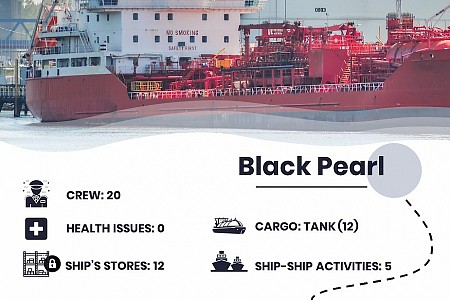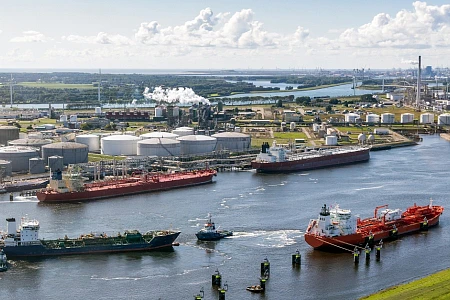The port call administration frustrations during a regular week
10 December 2020 – Solution

Three regular port visits results in over 6 hours of administration, 2,000+ fields to be completed divided into 13 documents and 23 tabs.
When you ask a captain one of his biggest frustration on board? Usually he will mention the port call administration. In this post we will illustrate the administrative burden captains struggle with during every port call. But also the solution to simplify administration and complete it up to 7.5 times faster.
Let’s check a standard voyage of the Black Pearl visiting three ports in Europe in a regular week. The Black Pearl with its 20 crew members and loaded with liquid bulk the voyage starts with a planned visit to the port of Rotterdam at Tuesday in the morning. 24 hours before entering the port, the captain has to process the part call administration. In this case, he must complete a spreadsheet with approximately 803 fields in 6 documents. Any errors in the administration can cause a delay or a penalty. This process takes approximately 2-3 hours. Shortly after completion of the administration, the most intensive part of the voyage begins: planning, navigating and continuously aligning in order to enter the port safely.

After discharging / loading again, the Black Pearl departures the port of Rotterdam and set the course for visiting the port of Antwerp. This is a fairly short trip and therefore the port call administration has to be handed fairly quickly, even before the Black Pearl has left the port of Rotterdam. To complete the administration, this time around 436 fields within 10 tabs have to be completed. Which takes about 2 hours of administration. More or less all the same information, but in different formats. For example, the nationality format should be expressed in the ISO 3166-2 code, like “PH” or “NL” instead of the country name, such as “Philippines” or “Netherlands” (Rotterdam). Fortunately, none of the crew members have health issues, otherwise another 11 fields had to be filled in per ill/recovered crew member.

The port visit went smoothly and several ship-to-ship activities were executed, like the bunkering operation. On day 4, the voyage continues, this time a visit to the port of Immingham is planned. It’s a trip of 313 nautical miles. Again 24 hours prior to arrival the captain has to handle the port call administration.
This time 852 fields has to be completed divided into 6 documents and 8 tabs. And again, the same information but in a different format, for example this time the Nationality should be expressed in the ISO 3166-3 code. In this case it will be “PHL” and “NLD”. After more than 2,5 hours of administration, the captain has a short moment of rest. Just a brief moment of peaks ahead of us to navigate the ship into the port safely and on time.
Above we illustrated just one regular week of port visits. This means during one year, with about 100 port calls to make, will result in over 200 hours of administration, completing 60K+ fields divided into 400+ documents and 750+ tabs.
At diize, we wondered why there is no smoother process to complete the administration. In the end, more or less the same information is handled and only a fraction of the time changes. And that’s why we build Always on Board, based on our maritime and digital expertise. With Always on Board the all information is securely stored in one application, and depending on the port, the correct formats will be submitted.
Always on Board is the easiest way to process the port call administration. Captains can process the administration in less than 20 minutes and achieve time savings of 85%. A solution that meets industry standards like low bandwidth functionality and use of the latest local port documentation. After configuration of all ship- and crew details by us the solution is directly usable. Only a short instruction and walk through is sufficient to start. No need for special hardware or software installations.
